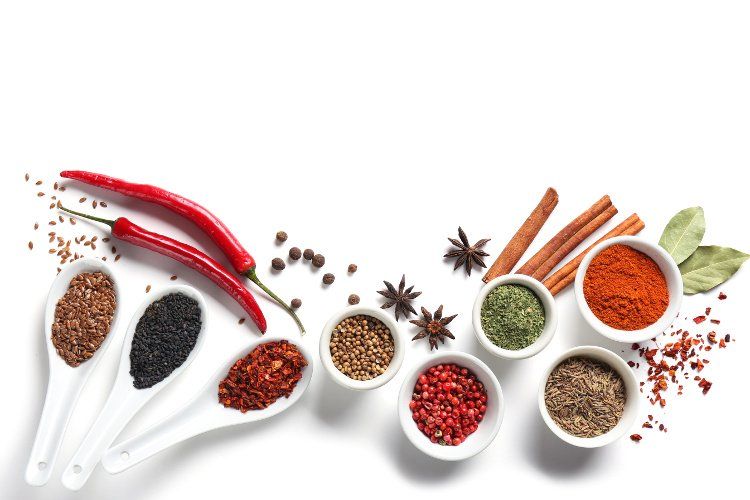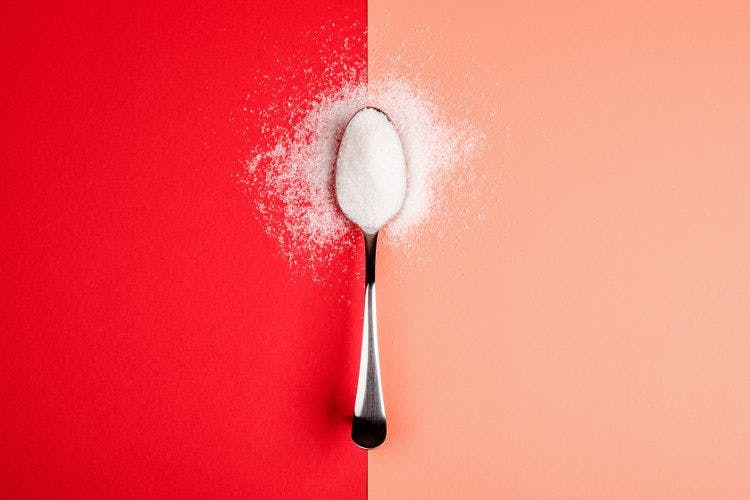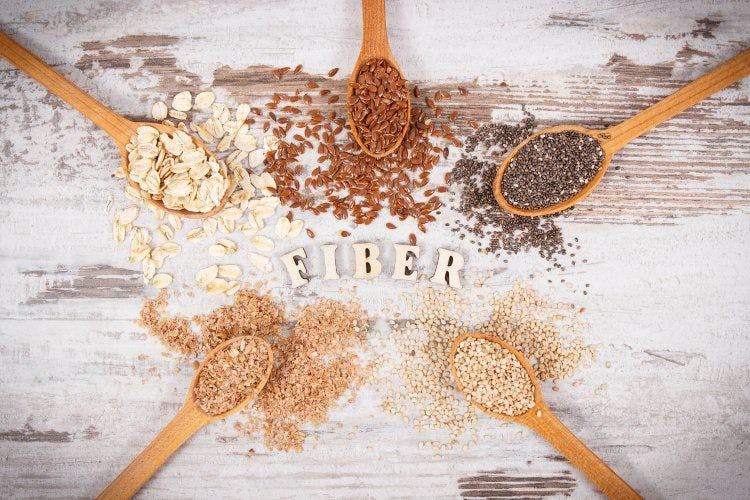2020 Flavor trends for food and beverage
Experts predict 2020’s hottest food and beverage flavors.
Photo © AdobeStock.com/Pixel-Shot

Which flavors will be hot in 2020? Leading flavor houses gave Nutritional Outlook their predictions for which flavors consumers will be looking for in food, drinks, and dietary supplements. (Nutritional Outlook’s previous yearly forecasts can be found here: 2019, 2018, 2017, 2016, 2015, 2014.)
Leading flavor themes for 2020 include a growing focus on nostalgic sweet flavors, sour and fermented flavors, and fruity flavors with a healthy halo. Regional influences also continue to entice the adventurous consumer.
The key is to remember that today’s consumers are embracing a broader range of flavors than ever before. “The everyday consumer now is very different and unpredictable,” says Keera Perumbala, marketing manager at Sensient Flavors (Hoffman Estates, IL). “They are athletes, wellness enthusiasts, vegans, connoisseurs, well-traveled, and aware. Food and beverage brands are constantly reinventing themselves in order to meet the needs of the future consumer. Unique flavor profiles combined with distinctive experiences are essential to a product’s success.”
Here are the flavors formulators should keep on their radar.
Sweet
Sweet flavors will always have a home with consumers. Food, drink, and supplement shoppers continue to find comfort not only in classic dessert themes but also confectionery flavors that bring back memories of childhood.
Gummy candy is one example of a nostalgic flavor now experiencing a revival, including in the ever-popular gummy dietary supplement. “One category of flavors to watch in 2020 is gummy candy flavors,” Megan Byrnes, marketing manager for flavor supplier Gold Coast Ingredients (Commerce, CA), tells Nutritional Outlook. “The nutraceutical industry has experienced an ongoing trend with sour, rainbow, peach, and fish-shaped gummy candy flavors. We predict more companies will add gummy candy flavors to their product range, as well as replicate the taste of alternative branded candies as well.”
Philip Caputo, marketing and consumer insights manager for flavors firm Virginia Dare (Brooklyn, NY), also points to a return of flavors reminiscent of “childhood bliss.”
“In the indulgent flavor space, childhood-inspired adult flavor hybrids are trending, as these profiles are associated with happiness, positive taste memories, and childhood bliss,” says Caputo. He notes that what Virginia Dare calls its Forever Young flavors include options such as Candy Classics, Lemonade, Mocktail, Cereal Milk, Carnival, and Upscale Desserts. “The positive emotions associated with these flavors can positively affect mood, therefore increasing motivation, energy, and confidence-which makes them particularly intriguing opportunities for performance nutrition products,” he adds.
Cotton candy is another childhood favorite, says Byrnes. “In addition to gummy candy flavors, cotton candy has been reintroduced to the nutraceutical market through various beverage products,” she says. “Cotton candy has also been a trending ingredient in the dairy, bakery, and restaurant industries. We foresee an increasing number of cotton candy–flavored products hitting the market in 2020 with slight variations in flavor profiles. For example, watch out for flavors such as grape cotton candy, blue raspberry cotton candy, strawberry cotton candy, rainbow cotton candy, and unicorn cotton candy.”
Popsicles are another throwback whose flavors consumers recently began embracing again, Byrnes adds. “Red, white, and blue popsicle flavor landed on the trend list in 2019. We predict rainbow popsicle and other fruit popsicle flavors will start to appear on product labels in 2020.”
Candy flavors aside, other youthful desserts also continue inspiring food, beverage, and supplement choices. Birthday cake, for instance, appeals as a flavor to those “with a sweet tooth looking for unique flavors that are youthful, fun, and celebratory,” says flavor supplier Synergy Flavors (Wauconda, IL). This flavor is making its way into categories like sports nutrition, such as in protein bars.
Cookie dough remains popular, and 2020 will be no different, according to Comax Flavors (Melville, NY) in its 2020 flavor trend predictions. “Eating raw cookie dough is a nostalgic act, and thanks to pasteurization and heat treatment, 2017 was the breakout year for safe, edible raw cookie dough,” the company said in a press release.
Cookie dough as a flavor continues to be popular with both adults and children, the company notes, with market research firm Technomic’s MenuMonitor reporting that cookie dough is experiencing 9% year-over-year growth on restaurant menus. With this in mind, Comax offers its So Doughlicious flavor range, which includes Birthday Cake Cookie Dough, Cold-Brew Coffee Cookie Dough, and S’mores Cookie Dough, all of which can be used in everything from dairy and ice cream to baked goods, nutrition and performance products, confections, nonalcoholic and alcoholic beverages, and beverage syrups.
Synergy Flavors likewise points to the success of “nostalgic” cookie dough flavors in the sports nutrition market, in products such as protein shakes and smoothies.
In fact, cookie flavors of all kinds continue to be popular. Comax notes that IRI data show that the cookie category increased 2.6% to reach $8.8 billion in the 52 weeks ending March 24, 2019.
Speculoos is one of those trending cookie flavors gaining mainstream prominence. The food industry has taken inspiration from this European spiced shortcrust biscuit for everything from cookie butters and truffles to ice cream. Synergy Flavors says speculoos is also promising in sports nutrition.
Another throwback, S’mores, continues to hold court as well. Synergy Flavors, for instance, points to its growth in categories like granola bars and even cereal.
Virginia Dare’s Caputo says marshmallow flavors in general continue to trend. “Following its upscaling in years past, we expect the marshmallow flavor to further expand,” he predicts.
Gold Coast’s Byrnes agrees. “Nutraceutical consumers have also responded well to marshmallow flavors: toasted marshmallow, chocolate marshmallow, hot cocoa marshmallow, and even peanut butter marshmallow. We foresee a new marshmallow pairing in the near future-possibly caramel marshmallow?”
When it comes to sweet flavors, Caputo said, finding ways to update many of these classics is key. “Elevated classics-merging vanilla, cocoa, caramel, maple, banana, and other favorites with sophisticated flavor pairing-like vanilla tarragon blueberry, maple curry spice, vanilla anise and mint, and cocoa cardamom” will be an ongoing movement, he says. He adds: “Bet on banana as a star flavor: upscale banana breads, supplement powders, protein bars, and the fire treatments-caramelized, burnt, grilled, brown-buttered, and flambéd.”
“Sweet spices” are also finding usage occasions outside of traditional holidays, says Caputo. For instance, he points to spices that can be paired with other flavors like chocolate, vanilla, maple, and fruit. These can yield combinations such as Chai Apple Cider, Clementine Cardamom, Spiced Cranberry, Vanilla Anise, and Maple Cinnamon.
Cinnamon is also firmly in demand, says Byrnes. She describes cinnamon as “here to stay.” Cinnamon-based flavors include snickerdoodle, churro, cinnamon bun, horchata, cinnamon children’s cereal, and cinnamon French toast.
Fruity
Fruity notes continue to play well with all consumers, including those who associate these flavors with health and wellness.
Firmenich Flavors (Geneva, Switzerland) has named “classic blueberry” its 2020 Flavor of the Year, noting that “traditional is now trendy.” In a press release, Firmenich Flavors’ president Emmanuel Butstraen commented: “What’s classic is new again. With blueberry, we celebrate a flavor that is timeless and enduring, but also increasingly relevant. Blueberry has been a beloved flavor for centuries in many markets, and today, with our increasing focus on health and wellness, blueberries are being rediscovered and growing to be one of the most relevant flavors in many categories.”
Based on social media observations, the company says, blueberries are often seen as a leading nutrient in terms of healthfulness, and formulators are paying attention. Firmenich reports that blueberry’s use in food and beverages has grown consecutively since 2008, with USDA data showing that U.S. blueberry production has increased fivefold since 2007. As a flavor used in new product development, blueberry has grown 101% over the past 10 years globally, including in markets such as Middle East, Latin America, and Asia, per Mintel data. Firmenich also points to Mintel data showing blueberry’s growth in a wide range of food and drink categories, including baby food, snacks, special drinks, breakfast cereal, sports and energy drinks, and alcoholic drinks. Blueberries are now found in everything from products you’d expect to more surprising places like savory pizzas, grain bowls, meat dishes, and even noodles, Firmenich reports.
One of the reasons for blueberry’s success is that it not only works well alone but also pairs well with many other flavors, the company adds. “Classic blueberry is a fantastic flavor to work with because it’s robust and multifaceted,” said Eric Tang, flavorist, Firmenich, in the press release. “Blueberry has standout floral notes and distinct tanginess, with fresh green and sweet elements woven in. Besides the classic pairings you find with blueberry, I’m also drawn to pairing it with less obvious matches, such as black tea or habanero,” he added.
Blueberry’s blue color is also its key characteristic. Perhaps it’s no coincidence that Pantone’s 2020 Color of the Year is “classic blue.” Sensient Flavors’ Perumbala tells Nutritional Outlook, “Most industries draw inspiration from Pantone’s Color of the Year, and the food industry is no different. We can expect already popular flavors such as berries to wear a shade of classic blue. Blue also is an unpredictable color in most food and beverage categories, which makes it an even more interesting choice to pique the interest of the experience-driven consumer. Sensient predicted the popularity of blue last year when we included a ‘Blue Velvet’ flavor in our ‘Trends to Taste’-our annual publication of consumer flavor trends to watch. The idea of a nondescript flavor that one has to guess is exciting to consumers, adding an experiential layer to the product.”
In general, a fruit’s color helps dictate its appeal, says flavor firm Döhler GmbH (Darmstadt, Germany). “Flavor trends are also influenced by color trends,” the company noted when talking about its 2020 flavor trend predictions and, in particular, a 2020 trend for fruit infusions and fruit tea infusions.
“Particularly in spring and summer, expressive Pantone colors that promise both a fresh appearance and taste are very popular. Examples include colors such as scarlet red, which is in great demand for red fruit infusions and fruit tea infusions, while saffron delivers a fresh and fruity impression that can be supported by citrus fruits and chamomile infusions.”
The Plant-Based Halo
Consumers generally associate botanical, plant-based ingredients with functional health benefits.
“Functional flavors will shape the category,” says Virginia Dare’s Caputo. “More specifically, the characterizing taste profiles from or inspired by highly functional ingredients, such as botanicals, spices, and healing herbs (e.g., turmeric, ginger, cinnamon, lavender, and honey), will grow in popularity alongside the increased emphasis on emerging health trends.” He adds: “We expect continued growth from botanical flavors, with more mainstream opportunities, paired with fruit in seltzers, cocktails, waters, fermented beverages, frozen desserts, and more.”
Sensient Flavors’ Perumbala says: “Herbs, florals and spices in beverages add not only an exotic twist and culinary exploration, but also offer a health halo to products they are used in. Even alcoholic beverages are taking advantage of this transferred health halo. Pine, milk thistle, hibiscus, etc., are some such ingredients that you can expect to start seeing in the coming years.”
She reminds formulators: “Consumers are looking for fun flavors that also provide function. Think about the cult status turmeric, ginger and the likes have reached. Ingredients such as turmeric provide not only flavor and function but also add an element of color, upping the visual appeal quotient. In the coming years, ingredients that are multifaceted will continue to be popular. Flavors such as purple tea are starting to show up in gourmet teashops and niche products while flavors such as yerba mate can already be found on grocery shelves. Aside from being flavorful, purple tea imparts a beautiful purple shade to products along with the benefit of antioxidants.”
Formulators can also find success in introducing newer flavors to the plant mix. Plant-based proteins, for instance, can be elevated with unique botanical notes. Micah Greenhill, beverage and alcohol category manager for ADM Nutrition (Decatur, IL), says: “Associated with health and wellness, botanically infused products are often perceived as being healthier than traditional offerings. For example, a protein beverage infused with hibiscus is more appealing than a beverage without any obvious plant ingredients to today’s consumer. Consumers are actively seeking out foods and beverages that promote wellness, and this is a leading factor in the rise of botanical flavors.”
Döhler GmbH also notes that some of the botanical flavors it expects to become more popular have a regional story to tell. For instance, “With the Olympics and Paralympics taking place in Japan in 2020, we noticed an increase in consumer interest in Japanese products that are in line with a sporty, active feeling. As such, trends are expected to include matcha and teas in general; citrus fruits; and ume, a Japanese apricot.”
Organic ingredients also have a role to play, notes Döhler. “With consumers wanting to lead a healthy lifestyle, the importance of naturalness and organic quality will continue to grow.”
Sour and Fermented
Sour and fermented ingredients are also quite popular these days. “Tart, sour, and fermented flavors are gaining momentum in food and beverage products and will take off in 2020,” says flavor firm Flavorchem (Downers Grove, IL).
The Japanese citrus fruit yuzu is one example, Flavorchem says. “Yuzu is the perfect combination of adventurous and global flavor blending with the tart taste profile consumers are seeking,” the company notes, adding that it expects to see yuzu’s popularity grow in the U.S., where consumers and formulators “are looking to experiment with new citrus profiles and exotic flavors that offer the perception of sweetness without added sugar, syrups, or artificial sweeteners.” Yuzu is currently appearing as a flavor in everything from cookies and ice cream to gummies, Flavorchem says.
Synergy Flavors also predicts growing usage of yuzu and notes its use in categories such as matcha, sparkling water, and even desserts.
Dragon fruit, also known as pitaya or strawberry pear, is also trending thanks to its sweet and sour flavor, and is being seen in everything from candies and gum to sorbet. Says Flavorchem: “The vibrantly pink fruit is also photo-friendly and is gaining widespread appeal through social media, especially Instagram. Dragon fruit is also a flavor that pairs well with other fruit flavors, including kiwi, pear, and strawberry. While the flavor has been seen in beverages in recent years, including Starbucks’ Dragon Drink, expect it to be more prominent in snacks, frozen desserts and bakery items.”
Virginia Dare’s Caputo also heralds the “sophisticated sour” movement. “Along with bitter profiles, sour and tart profiles are soaring, including vinegars, fermented drinks, tonics, cocktails, beers, varietal citrus, sour berries, and more,” he tells Nutritional Outlook. “There’s still a lot of layering and opportunity to build complexity within the sour flavor category. Specific flavors include pomelo, grapefruit, cranberry, limoncello, and kombucha.”
Tart cherry is a flavor that Synergy Flavors says is starting to appear in food products and that has potential to go mainstream in the near future, particularly in the sports market. The company notes that the number of tart cherry product launches increased 87% between Q4 2017 and Q1 2018. Tart cherry has already appeared as a flavor in products such as sports recovery drinks, chocolate bars, and cold-brew coffee.
Fermented flavors are likewise growing in demand. “A flavor and color trend that has captured the taste buds of American consumers in its own right, fermented foods are also part of a larger movement in the food and beverage industry toward natural ingredients that provide functional benefits,” says Christopher Naese, vice president of business development for Florida Food Products (Eustis, FL), which supplies fermented vegetable products such as fermented beet, carrot, and mushroom juices and powder, for everything from sports nutrition beverages, supplement powders, and more. “As consumers eschew sweets and crave flavors commonly associated with fruits and vegetables, fermented ingredients have found a wider appeal, especially among consumers under the age of 40 who are seeking novel, multisensory food experiences.”
Part of the growing appeal of fermented flavors relates to their authentic feel, Naese says. “The growing distaste for artificial colors, flavors, preservatives, and other additives across the food and beverage industry has an even firmer foothold in products formulated for health and wellness markets. Fermented ingredients such as beet or carrot juices or powders are a natural, on-trend way to add dynamic, clean-label flavor, color, and health benefits in an authentic, recognizable way.”
Spicy
The spicy category continues to flourish, notes Jocelyn Foster, product manager, spice and herb flavor extracts, for ingredients supplier Kalsec (Kalamazoo, MI). “We recently conducted research that revealed that more than half of global consumers surveyed are eating spicier foods more often than they were just one year ago,” she says. “We expect this growing interest in spice to drive demand for global flavors in 2020.”
Consumers are drawn to spicy flavors from a range of cuisines. Harissa is one spice that has grown out of rising interest in Middle Eastern and African foods and flavors, she says. “Much like its predecessor, sriracha, harissa is a spicy blend of chili and garlic that is often used in a sauce or paste form. These familiar application options make harissa an easy foray into spicy flavors for consumers looking to blend a new spice with a familiar food.”
Chimichurri, from Latin American cuisine, is another popular spice today. “With so many choices and new food and beverage options available, we are seeing many consumers flock back to familiar flavors and cuisines, especially those that offer familiarity with a flavor twist. One example of this is within in the TexMex category, which is evolving to include more nuanced and specific flavors, including those from other Latin American regions such as Argentinian chimichurri,” Foster says. “We predict this flavor will trend as consumers seek more authentic Latin American flavors that carry regional flair and authentic spicy flavors.”
Finally, she points to the popularity of a specialty pepper, the hatch green chili. “Our 2019 hot and spicy research showed that consumers want to know more about the ingredients that give their foods heat and flavor, including an understanding of the pepper type and where it’s grown. Hatch green chili is a great example of this as it has such a distinct, fresh, green spicy flavor and is grown in the Southwestern United States. The story of its origin and flavor is one many consumers are just starting to learn.”
Flavorchem points out cardamom, which is described as having a spicy, minty, and citrusy flavor, as a growing trend. “As spices traditionally used in ethnic cuisine become more mainstream in the United States, expect a rise in the usage of cardamom in nontraditional applications. Cardamom is popular in both Middle Eastern and Indian dishes, so the flavor is becoming more adaptable to American palates, especially Millennial and Gen Zers,” the company says. “Its broad appeal covers a wide range of savory and sweet applications, including indulgent baked goods.” Cardamom has been included in everything from granola and cookies to ice cream, the company adds.
Turmeric, the superstar spice, is still going strong. While the ingredient has already appeared in products such as ice cream and supplements, it is also a growing anti-inflammatory ingredient in categories like sports nutrition and protein drinks, says Synergy Flavors.
Coffee and Tea
Coffee is a flavor that never goes out of style. “Trending flavors that will continue to thrive in the nutrition industry include the coffee flavor range such as caramel coffee, vanilla latte, mocha, cappuccino, cold-brew coffee, and espresso,” says Gold Coast Ingredients’ Byrnes.
Coffee flavors are being incorporated in numerous ways, says Virginia Dare’s Caputo, including in “upscale canned coffee cocktails and spiked lattes, whether dairy- or plant-based.” He adds that “Cream liqueurs, a related category, have been making noise on our radar. More sophisticated flavors are expected from fruit and cream to coffee-inspired drinks to unique flavors like cocoa cardamom.”
Döhler GmbH says that cold-brew cocoa infusions are also of interest alongside demand for cold-brew coffee, for both alcoholic and nonalcoholic beverages as well as dairy and dairy-free applications.
And over in the tea category, matcha remains popular, with 520% growth in matcha-flavored products over the last four years, says Synergy Flavors. Match is not only making appearances in foods like ice cream and dairy alternative drinks, but also in nutrition bars and protein drinks, and is a promising ingredient in sports nutrition.
Savory and Smoked
Meat-alternative products give consumers the experience of eating meat, and meat-inspired flavors are also influencing formulators. Says Gold Coast’s Byrnes, “On the savory side of the nutrition industry, 2019 was the year for meatless ground beef. As the market introduces new alternative meatless products such as meatless hotdogs, sausage links, and ground sausage for pizza toppings, this opens doors for innovative vegetarian sausage flavors in 2020: Italian sausage, hot link, bratwurst, smoked sausage, and more.”
Smoky flavors are also creating more nuanced options, whether they be sweet or savory. Virginia Dare’s Caputo points to “lightly flavored and hinted flavors-e.g., toasted, brûléed, smoked, barrel-aged, creamed, and spiced.”
Regional Influences
Regional flavors continue to fascinate. “Regional connections are often reminiscent of destinations that evoke certain feelings and imagery, and manufacturers can use that to their advantage to create products that stand out on the grocery store shelf,” says ADM Nutrition’s Greenhill.
Take tropical flavors. “Over the past few years, we’ve seen tropical flavors really take off, particularly in the beverage category,” he says. “This is because tropical flavor profiles are recognized by consumers as light and refreshing. As flavored and hard seltzers have gained popularity, tropical flavors have paved a path for the rise of authentic, regionally inspired flavors. For example, Valencia orange and Sicilian lemon fit the tropical flavor profile consumers already know and love, but the addition of a region or location adds an authenticity that simply orange flavor or lemon flavor doesn’t evoke. Today’s consumers have so many options when it comes to food and beverages that flavors with exotic connotations will continue to trend as manufacturers look to distinguish their offerings from competitors.”
Asian flavors are a big influencer. Citing research from Foodable, Comax Flavors notes that Asian flavors on menus at fast-casual restaurants have increased nearly 30% year over year. Much of the demand for Asian flavors comes from younger consumers.
And Synergy Flavors says that mochi, a pounded rice cake from Japan, is a flavor that is newly emerging in sports nutrition.
Sustainability
Finally, it’s no secret that more consumers are looking for more sustainable options in foods and beverages-flavors included. “As sustainability and environmentally conscious offerings have become a key focus in the industry, sustainably sourced flavors are expected to rise in demand to meet consumer expectations,” says ADM Nutrition’s Greenhill. “The demand for sustainably sourced ingredients is driving suppliers to reexamine their supply chains and make changes that have a positive impact on the environment.” ADM, for instance, highlights its sustainable supply of vanilla and mint.
Earth-inspired flavors are also something to watch, says Virginia Dare’s Caputo. “We anticipate future growth in flavor profiles that are inspired by or celebrate the earth and other natural elements, bringing awareness to climate change, loss of species, and sustainability. Earthy flavors (e.g., mushroom, beet, fig, teas, turmeric, pine, and herbs) and flavors or products inspired by earth’s natural phenomena (e.g., ice cream mudslides, chocolate lavaflow cake, pop-rock earthquake shakes, chocolate-covered cherry magma, and layers-of-the-earth cake) are parts of this projected trend.”
Flavors: An Emotional Connection
Above all, the role of flavors in the future will be to connect with consumers on an emotional level. Jeffrey Schmoyer, vice president of global insights for Firmenich, noted in the company’s press release that there has been a “significant shift in the food industry toward more intentional and emotional design.”
For instance, he said, “Consumers are more inclined to try something unfamiliar to them, such as kombucha or a cashew yogurt, if it’s flavored in a way they can connect with on an emotional level.”
Likewise, says Kalsec’s Foster, “In 2020, we anticipate many of the broader flavor trends will be driven by a growing desire among consumers to understand more about the ingredients in their foods and where those ingredients are sourced. This desire is connected to broader trends of storytelling and transparency as consumers seek to connect more closely with the world around them and consume foods that resonate with them and their own personal values.”

HHS announces restructuring plans to consolidate divisions and downsize workforce
Published: March 27th 2025 | Updated: March 27th 2025According to the announcement, the restructuring will save taxpayers $1.8 billion per year by reducing the workforce by 10,000 full-time employees and consolidating the department’s 28 divisions into 15 new divisions.

























